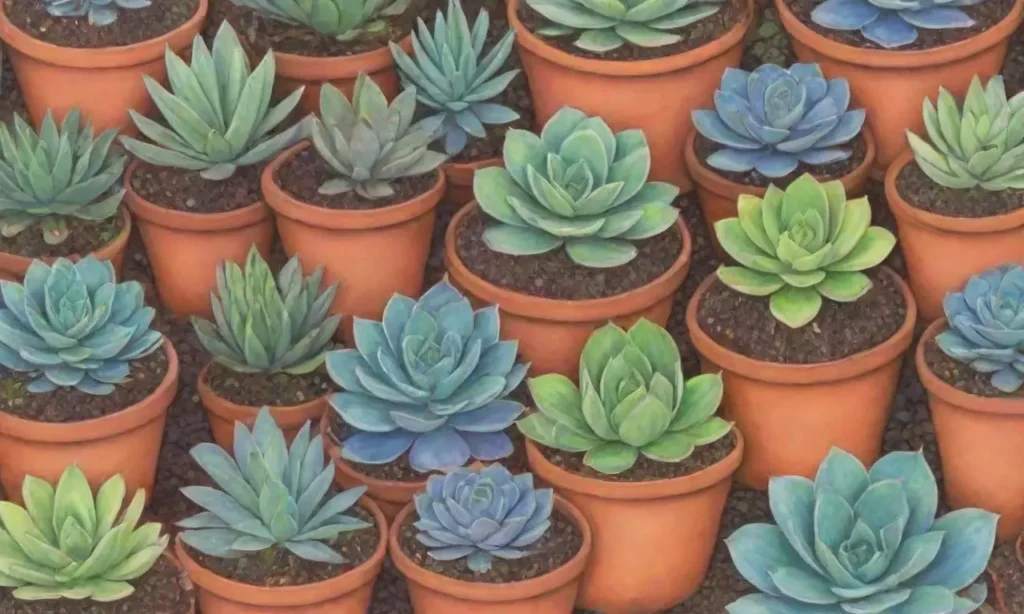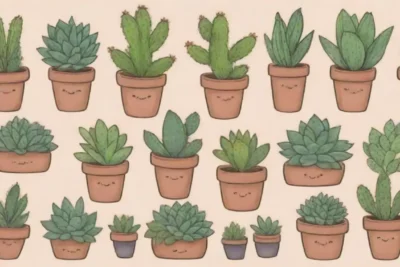
How Succulents Influence Sustainable Practices Globally

Introduction
Succulents are not just visually appealing plants; they hold value far beyond their aesthetic contributions. Known for their ability to store water, succulents have become synonymous with low maintenance and drought-resistant gardening techniques. Over the past few years, their popularity has surged not only as decorative houseplants but also as symbols of sustainable living. Globally, succulents play a significant role in promoting sustainable practices across various sectors, including gardening, landscaping, and even commercial agriculture.
This article delves into how succulents serve as catalysts for sustainable practices worldwide. We will explore their water conservation abilities, their roles in local ecosystems, and how they inspire eco-friendly gardening and landscaping choices. We aim to uncover the impact of these hardy plants on our environment and propose actionable steps to leverage their benefits in promoting sustainability.
The Role of Succulents in Water Conservation
Drought Resistance and Water Efficiency
Succulents have the extraordinary ability to thrive in arid environments, largely due to their specialized structure that allows for efficient water storage. This makes them ideal choices for regions susceptible to drought, where water scarcity is a pressing concern. By utilizing succulents in your landscape, you can significantly reduce water consumption. Unlike traditional plants that may require regular watering, succulents can store moisture within their leaves, stems, or roots, thus minimizing the need for frequent irrigation.
The water-efficient nature of succulents extends to gardening practices as well. For urban dwellers facing water restrictions or those who are conscious of their ecological footprint, incorporating succulents into their gardens can lead to reduced water usage. Studies indicate that gardens comprising primarily of succulents can consume up to 80% less water than traditional gardens, making them an excellent choice for sustainable landscaping. Not only do these plants save water, but they also contribute to the health of local aquifers by reducing runoff.
Community Involvement and Education
In many communities, particularly those facing acute water shortages, succulents have emerged as valuable educational tools. Workshops focused on succulent gardening can teach participants about water conservation strategies, such as rainwater harvesting and soil moisture retention, which are vital skills in arid environments. By engaging local schools and community centers in succulent planting initiatives, residents can collectively make small yet significant strides toward reducing overall water consumption.
Moreover, grassroots movements dedicated to sustainable gardening frequently promote the use of succulents. Educational pamphlets, social media posts, and community events often highlight succulent care techniques that emphasize water preservation. This community-based approach not only empowers citizens with knowledge but also draws attention to broader issues, such as climate change and water scarcity, fostering a culture of sustainability.
The Ecosystem Benefits of Succulents
Supporting Local Biodiversity
Succulents are more than merely practical; they also support local biodiversity. By planting succulents, gardeners create habitats for various species, including pollinators like bees and butterflies. The unique blooms of many succulent varieties attract a range of pollinating insects, which are crucial for maintaining healthy ecosystems. Encouraging these creatures can contribute to a balanced environment where plants and animals coexist harmoniously.
 How Different Cultures Use Succulents in Art and Decoration
How Different Cultures Use Succulents in Art and DecorationIn addition, many succulents have adapted to co-exist with specific local fauna. For instance, some species provide shelter and food for insects and small birds. By planting these varieties, you are not just beautifying your space; you are contributing to the preservation of local wildlife. Thus, each succulent represents a small yet significant step towards maintaining biodiversity.
Soil Health Improvement
Succulents can also improve soil quality, contributing to a more sustainable ecosystem. Their root systems help regulate moisture levels in the soil, preventing erosion while enhancing its nutrient-holding capabilities. This is particularly beneficial in arid and semi-arid regions, where desertification is a growing concern. By maintaining the integrity of the soil, succulents ensure that it remains fertile and capable of supporting other plant species.
Moreover, when succulents die or shed leaves, they enrich the soil with organic matter, further promoting soil health. This natural fertilization process reduces the need for synthetic fertilizers, which can be harmful to the environment. By fostering healthy soil, succulents play an integral role in creating resilient ecosystems that can withstand environmental fluctuations.
Succulents As Catalysts for Eco-Friendly Landscaping

Urban Green Spaces
In urban environments, succulents have paved the way for innovative landscaping methodologies. As cities grapple with increasing heat and reduced green spaces, the incorporation of drought-tolerant plants like succulents can considerably lower urban heat effects. Green roofs, which utilize succulents due to their low weight and water retention abilities, have become common in cities looking to combat heat islands.
The installation of succulent gardens in public spaces such as parks, sidewalks, and building exteriors promotes eco-friendly landscaping practices. These landscapes not only beautify urban settings but also reduce the need for extensive irrigation systems. Cities adopting more sustainable landscaping approaches have reported a decrease in water usage and maintenance costs, contributing significantly to urban sustainability efforts.
Commercial Agriculture and Succulent Cultivation
Commercial agriculture is increasingly recognizing the role of succulents in promoting sustainable practices. Nurseries that specialize in succulent cultivation are finding that they can cultivate these plants with minimal water and less reliance on chemicals. As consumers become more environmentally conscious, the demand for sustainable plant sources has risen. Growers utilize regenerative agriculture practices to start succulent nurseries, enhancing local economies while conserving finite resources.
 Caring for Succulents: Cultural Methods Through the Ages
Caring for Succulents: Cultural Methods Through the AgesBy utilizing succulents in agricultural settings, farmers can diversify their crops while conserving land and water. This approach reduces monoculture farming and provides consumers with a more diverse range of plants, helping to support local ecosystems. Additionally, the rising popularity of succulent arrangements for landscaping and interior decor bolsters local economies, particularly as consumers look for sustainably sourced plants.
Conclusion
In wrapping up our exploration of how succulents influence sustainable practices globally, we realize that these extraordinary plants offer a myriad of benefits transcending mere aesthetic appeal. From water conservation efforts to their essential role in promoting local biodiversity, succulents become beacons of sustainability that encourage thoughtful engagement with our environment.
The incorporation of succulents into everyday life symbolizes a shift toward more eco-friendly practices and lifestyle choices. Communities are coming together to learn about sustainable gardening techniques, actively participate in local conservation efforts, and advocate for policies that support the use of drought-resistant plants. By creating awareness and engaging in local initiatives, individuals contribute to a larger movement focused on environmental stewardship.
Ultimately, the potential for succulents to foster sustainable practices is endless. As we invest in these hardy plants, we are not just planting for aesthetic purposes; we are investing in a responsible and resilient future. With their remarkable attributes, succulents inspire us to adopt more sustainable lifestyles, encouraging us to cherish our environment while enjoying the enchantment these plants bring into our lives. As we continue to embrace succulents, we pave the way for more sustainable, healthier, and greener living spaces for generations to come.
If you want to read more articles similar to How Succulents Influence Sustainable Practices Globally, you can visit the Cultural Significance category.






You Must Read